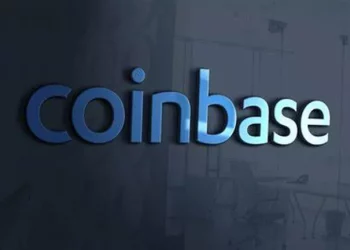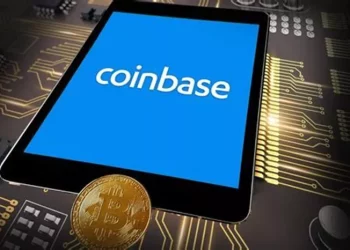Cryptocurrencies have become an integral part of the modern financial landscape. As digital assets, they enable users to perform secure, fast, and borderless transactions. However, storing, trading, and transferring cryptocurrencies requires the use of cryptocurrency exchanges, which act as platforms for managing digital assets.
One of the most popular exchanges for buying, selling, and trading cryptocurrencies is Kraken. Kraken is known for its user-friendly interface, wide range of supported cryptocurrencies, and robust security features. If you’re new to cryptocurrency or considering transferring your digital assets to Kraken, it’s important to understand the process, the types of assets supported, and any potential fees involved.
In this article, we will explore whether you can send crypto to Kraken, how to do it, the steps involved, and the potential issues you may encounter. We will also discuss the best practices for ensuring that your cryptocurrency transactions are secure and efficient.
What Is Kraken?
Kraken is a global cryptocurrency exchange that allows users to trade a variety of digital assets, including Bitcoin (BTC), Ethereum (ETH), Litecoin (LTC), and many others. It is one of the largest and most reputable exchanges, providing access to both retail and institutional traders. Founded in 2011, Kraken has built a solid reputation for security, transparency, and its range of supported cryptocurrencies.
Kraken offers various services, including spot trading, futures trading, staking, and fiat-to-crypto transactions. It is available in many countries and supports a variety of fiat currencies, such as USD, EUR, and GBP.
One of the key features of Kraken is its ability to store cryptocurrencies in its secure wallets. Kraken’s wallet service allows users to deposit, withdraw, and transfer a range of digital assets, making it an essential platform for both new and experienced crypto traders.
Can You Send Crypto to Kraken?
Yes, you can send cryptocurrency to Kraken. Kraken allows users to deposit a variety of cryptocurrencies from external wallets, including personal wallets, other exchanges, and other sources. The process of sending crypto to Kraken is relatively straightforward, but it’s important to understand the steps involved and the key considerations when transferring your digital assets.
When you send cryptocurrency to Kraken, you’re essentially transferring it from one wallet to another. The cryptocurrency will be stored in your Kraken account, where you can trade it, hold it, or use it for staking, depending on the type of asset and your preferences.
Supported Cryptocurrencies on Kraken
Before you begin the process of transferring crypto to Kraken, it is important to know which cryptocurrencies are supported on the platform. Kraken supports a wide range of digital assets, including both major coins and various altcoins. Some of the most popular cryptocurrencies you can send to Kraken include:
Bitcoin (BTC) – Bitcoin is the first and most well-known cryptocurrency, and it is supported by Kraken. It can be sent to your Kraken account for trading, storage, or staking.
Ethereum (ETH) – Ethereum is another widely used cryptocurrency, and Kraken supports both Ethereum and Ethereum Classic (ETC). Ethereum is used for smart contracts, decentralized applications (dApps), and DeFi projects.
Litecoin (LTC) – Litecoin is a popular alternative to Bitcoin, often referred to as “silver to Bitcoin’s gold.” Kraken supports Litecoin deposits.
Ripple (XRP) – Ripple is a digital payment protocol that is also supported on Kraken. XRP is used in international remittance systems and blockchain-based payment systems.
Bitcoin Cash (BCH) – Bitcoin Cash is a fork of Bitcoin, and Kraken supports BCH deposits for users who wish to send it to their Kraken accounts.
Polkadot (DOT) – Polkadot is a blockchain network that facilitates interoperability between different blockchains. Kraken supports the deposit and trading of DOT tokens.
Cardano (ADA) – Cardano is a proof-of-stake blockchain platform, and ADA is its native cryptocurrency. Kraken supports the transfer of ADA to and from its platform.
Chainlink (LINK) – Chainlink is a decentralized oracle network that connects smart contracts to real-world data. LINK can also be sent to Kraken for trading and storage.
In addition to these cryptocurrencies, Kraken supports many other altcoins, including stablecoins like USDT, USDC, and DAI. A full list of supported cryptocurrencies can be found on Kraken’s official website.
How to Send Crypto to Kraken: A Step-by-Step Guide
Transferring cryptocurrency to Kraken can be done in a few simple steps. The process is similar to sending crypto to any other wallet, but it’s important to follow the specific instructions provided by Kraken to ensure a smooth transaction. Here is a step-by-step guide on how to send crypto to Kraken.
1. Log In to Your Kraken Account
Before you can send crypto to Kraken, you need to have a Kraken account. If you don’t already have one, you will need to sign up on Kraken’s website. The sign-up process is straightforward and requires basic information, such as your email address, username, and password.
Once you’ve created your account, log in using your credentials.
2. Navigate to the Deposit Section
After logging into your Kraken account, navigate to the “Funding” tab located at the top of the screen. In the “Funding” section, select “Deposit.” This will allow you to choose the cryptocurrency you wish to deposit.
3. Select the Cryptocurrency You Want to Send
Kraken supports a wide range of cryptocurrencies, so you will need to choose the specific cryptocurrency you want to send. If you are sending Bitcoin (BTC), Ethereum (ETH), or any other supported cryptocurrency, click on the respective option.
4. Obtain the Deposit Address
Once you select the cryptocurrency you wish to deposit, Kraken will generate a deposit address for you. This address is unique to your Kraken account and is used to identify where your cryptocurrency should be sent. The deposit address will typically be a string of alphanumeric characters, which you can copy to your clipboard.
Make sure to double-check that you have selected the correct cryptocurrency and deposit address. Sending the wrong type of cryptocurrency to an incorrect address can result in the permanent loss of your funds.
5. Send Cryptocurrency from Your Wallet
Now that you have the deposit address, you can send cryptocurrency from your personal wallet, another exchange, or any other source. To do this, log in to the wallet or exchange from which you’re sending the crypto.
In your wallet’s send or transfer section, paste the Kraken deposit address you obtained earlier. Be sure to enter the correct amount of cryptocurrency you want to send. Double-check the address and amount before confirming the transaction.
Once you’ve reviewed everything and are confident that the information is correct, initiate the transfer. Depending on the cryptocurrency, the transaction may take anywhere from a few minutes to a few hours to complete.
6. Wait for the Transaction to Confirm
After sending your crypto, the transaction will need to be confirmed on the blockchain. Each cryptocurrency operates on its own blockchain, and the confirmation process ensures that the transaction is legitimate. The number of confirmations required varies depending on the cryptocurrency. For example, Bitcoin typically requires six confirmations before the transaction is fully processed.
You can monitor the status of your deposit by checking the transaction hash (TXID) on a blockchain explorer. This allows you to track the progress of your transfer.
7. Verify the Deposit on Kraken
Once the transaction has been confirmed, the cryptocurrency will appear in your Kraken account. You can view the status of your deposit in the “Funding” section of your Kraken account. The balance will be updated, and you’ll be able to trade, stake, or withdraw your crypto as desired.
Potential Issues When Sending Crypto to Kraken
While sending cryptocurrency to Kraken is generally a straightforward process, there are some common issues that users may encounter. Here are a few things to watch out for:
Incorrect Deposit Address: One of the most common mistakes when sending crypto is entering the wrong deposit address. Always double-check that the address matches the one provided by Kraken for the specific cryptocurrency you’re sending.
Transaction Delays: Cryptocurrency transactions are subject to network congestion, and the speed of processing can vary. If there is heavy traffic on the blockchain, your deposit may take longer to confirm.
Minimum Deposit Requirements: Some cryptocurrencies have minimum deposit amounts. Be sure to check Kraken’s deposit requirements for the cryptocurrency you’re sending, as sending an amount below the minimum may result in the transaction being rejected.
Network Fees: Sending cryptocurrency usually requires paying a network fee to the blockchain miners or validators. Be aware of the current network fees for the cryptocurrency you’re sending, as they can vary depending on the network’s congestion.
Unsupported Cryptocurrencies: Kraken does not support all cryptocurrencies, so it is important to verify that the cryptocurrency you’re sending is supported by the exchange. Sending unsupported coins to Kraken may result in the loss of funds.
Best Practices for Sending Crypto to Kraken
Double-Check the Address: Always confirm that you’re sending crypto to the correct deposit address. Even a small mistake in the address can result in the loss of your assets.
Use Two-Factor Authentication (2FA): Enable 2FA on your Kraken account for added security. This ensures that only you can access your account and perform transactions.
Check Network Congestion: Before initiating a transfer, check the status of the blockchain network to ensure there are no delays or congestion that might slow down your transaction.
Track Your Transaction: Use a blockchain explorer to track the status of your transfer and ensure that the transaction is confirmed.
Be Aware of Fees: Always check the network fees before sending crypto. Kraken doesn’t charge a fee for deposits, but the blockchain network may impose a fee depending on the cryptocurrency.
Conclusion:
Sending cryptocurrency to Kraken is a simple and secure process, as long as you follow the necessary steps and take precautions to ensure the transfer is accurate and efficient. By choosing the right cryptocurrency, confirming the deposit address, and monitoring the transaction status, you can successfully transfer your crypto to Kraken for trading, storage, or staking.
As with any financial transaction, security is key. Always make sure that your Kraken account is secured with strong passwords and two-factor authentication. By following best practices and staying informed about the processes and potential issues, you can confidently send and manage your cryptocurrency on Kraken.
Related topics:

















